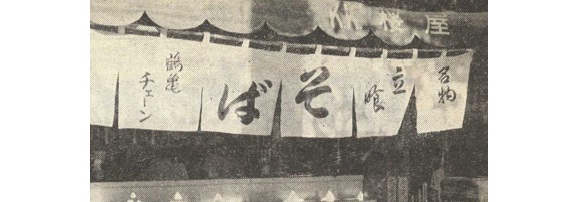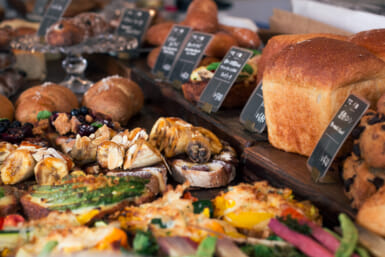Newcomers to Japan, as well as passers-through and veteran gaijin residents, can find some of the most delicious, quick and inexpensive Japanese and other Oriental foods behind the noren — simple, often threadbare curtains hanging above hundreds of roadside eateries throughout the country.
For example, at the top, read the hiragana for soba, a bowl of steaming, hot, spaghetti-like noodles with an interesting taste derived from its distinctive broth. The noren in the photo below, left, indicates these garage-type doors lead to a shop featuring udon, a pungent stew with thick, homemade noodles and a variety of vegetables which may include a surprise or two.
Below, left to right: The single kanji character says you can grab a nip of sake — Japanese rice wine — along with some snacks to munch on. The ubiquitous sushi sign where you can expect a wide variety of tastes and shapes of raw fish and other seafood delectibles over rice. Meshi, a cafe serving “typical Japanese family fare,” usually inexpensive and filling.
Bottom row, left to right: Chuka ryori, or Chinese food, which can be anything from chahan (fried rice) to harumaki (spring rolls) to gyoza (fried pork dumplings). Unagi (eel) is one of the big favorites of the Japanese for its taste and believed nutrition and although the thought of eating eel may be repulsive at first to some gaijin, often one taste of unagi is enough to make non-believers lifelong converts to this delicacy.
So, next time you’re looking for a quick, economical lunch, look to the noren, read the symbols and drop inside for a gastronimical treat.
Itadakimasu!










